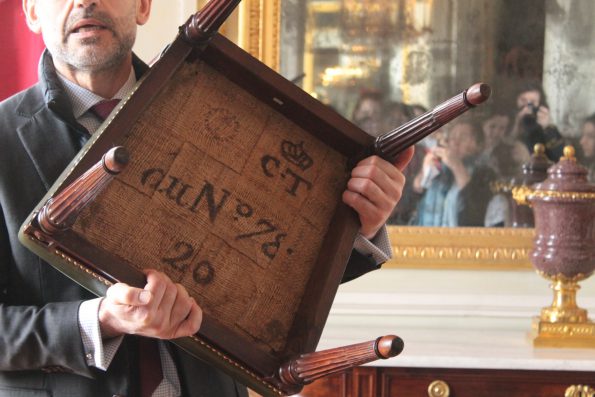In houses-turned-museums, a thin red rope is as good as a brick wall in keeping visitors at bay; but the curator of The Petit Trianon, Marie Antoinette’s summer home at Versailles, can step past that rope and into history.
In a private tour for visiting student journalists on Thursday, Curator Bertand Rondot stepped into the large dining room and grabbed a deep brown chair dotted by gold metal pins. The group gasped: the chair looked as fragile and untouchable as the rest of the surrounding fragments of Marie Antoinette’s world. When Rondot then briskly swung the chair upside-down, propping the ornate woodcut backrest on his shoulder, nearly every student whipped out a camera to capture the unique image: both the rarely seen underside of the chair, and the sight of human contact with an untouchable artifact.

Objects in museums usually seem as static as pixels on a screen. Their display seems sufficient in telling the whole story: visitors can walk from room to room without asking or wondering what it on the back or underneath an object. When the Rondot breached the invisible walls that the visitors could not, though, he brought the room to life. The bottom of this chair promised more stories and sparked more questions than the chandeliers and intricate wallpaper that usually characterize Versailles and The Petit Trianon.
Rondot reminded the visitors that objects have backs, bottoms, stamps left by the humans who made them and signs of wear from the humans who used them. You can imagine the scratchiness of the chair’s woven underside, and picture someone applying the thick black ink that reads “C.T. – au No. 78 – 20.” Using those numbers, the curators pieced together a story that Marie Antoinette tried to keep secret.
Notorious for her lavish lifestyle, Marie Antoinette was relentlessly criticized by the public in the tumultuous time leading up to the French Revolution. In an effort to conceal her spending, Rondot said, she had someone destroy the purchase records of the chairs and other furniture destroyed. The numbers on the underside, however, hold the key to reconstructing Antoinette’s The Petit Trianon.
The numbers denote the type of room a chair belongs to, and indicate that this chair was for a dining room. Curators used other clues in records of the house to determine in which of the multiple dining rooms this chair would have been.
“It is like a puzzle,” Rondot said, “which we can slowly reconstruct.” From behind the red rope, the most visitors can do is observe Versailles as an image. But look under even just one chair, and Versailles might start looking like the moving picture it really is, with still more stories to tell, and puzzles to solve.
